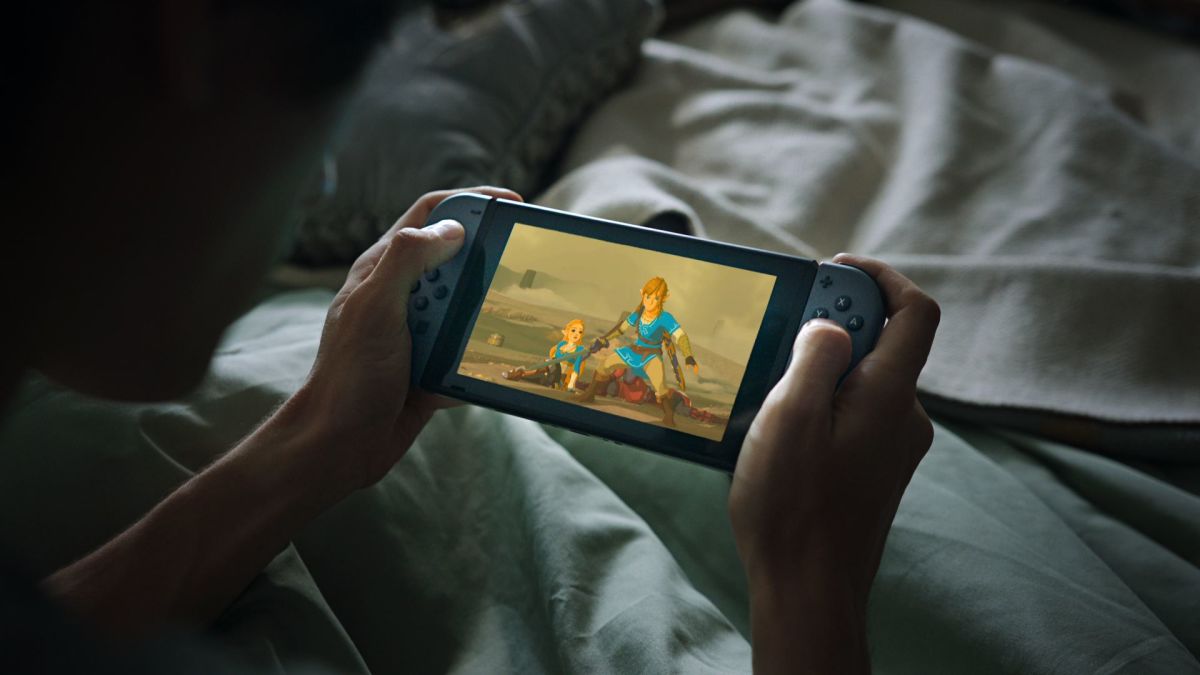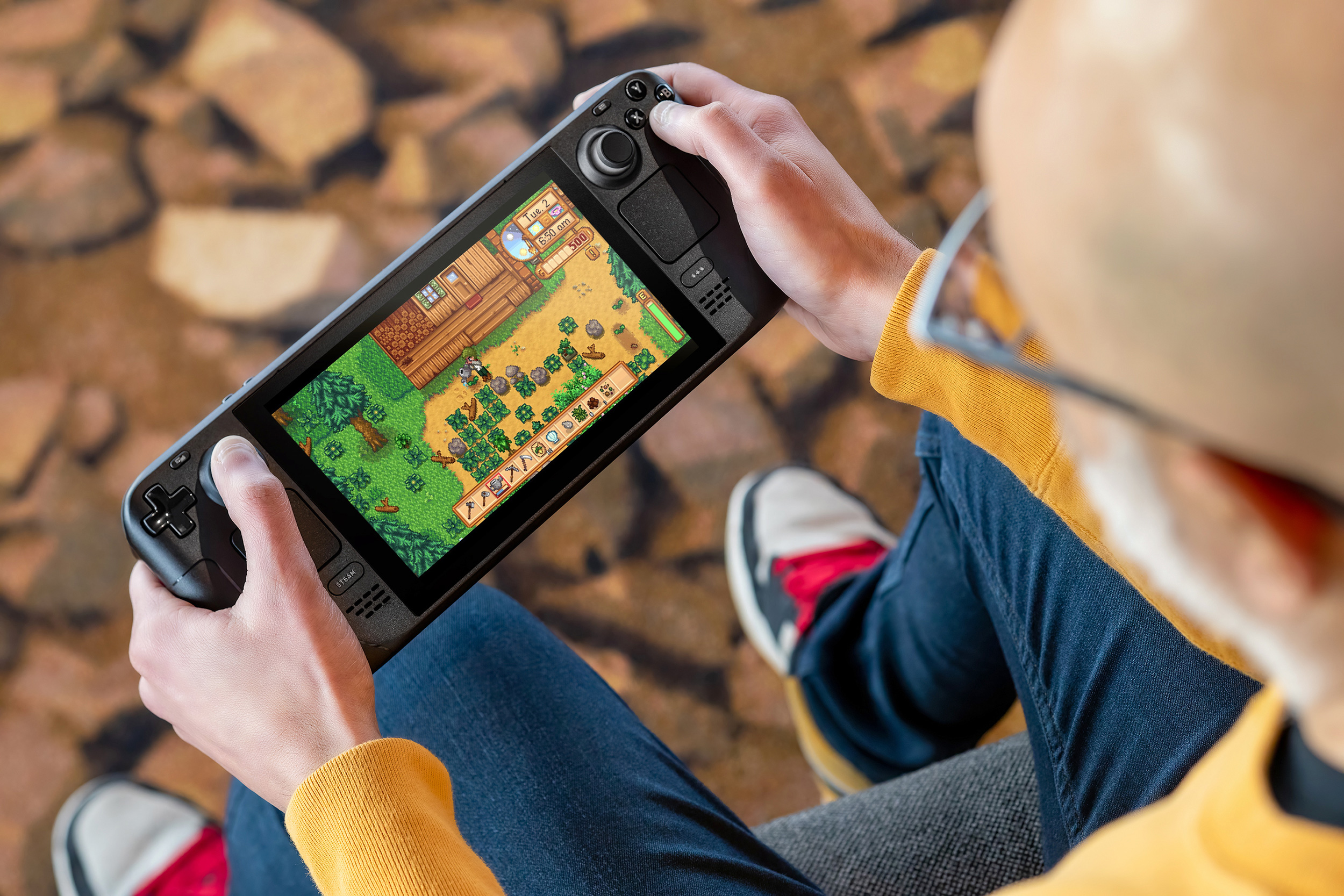Steam Deck or Switch: Which is the right handheld for you?

Handheld gaming is on the rise as families fight for time in front of their TVs. While everyone is huddled around the big screen in your lounge, you can get in some game time on a portable powerhouse. The two big competitors on the market at the moment are Valve’s Steam Deck and Nintendo’s Switch. However, these are very different consoles and it can be hard to decide the best one for you. Here are all the differences between the two most popular portable consoles.
Steam Deck vs. Switch: The pricing

The Steam Deck has a variety of models, with the cheapest having 64GB of storage for $399, and the more expensive models offering a faster solid-state drive and more storage, going up to 512GB for $649. The version you will want will depend on the kind of games you want to play. If you want to play the biggest open-world releases, you’ll have to go for a more expensive model. However, if you just want to play indies or smaller games, the cheapest model will suffice.
The Nintendo Switch is by far the more affordable option. If you plan to only play it portably, the Switch Lite is a great option and only costs $199. However, if you want to connect it to the TV that will add an extra $100, and the OLED model with its fancy screen costs $349. The Switch is far less technologically advanced than the Steam Deck, which accounts for the price difference. However, the fact that the most expensive Switch is cheaper than the cheapest Steam Deck will probably factor into your decision.
Steam Deck vs. Switch: Storage

Both the Steam Deck and the Switch can have their storage upgraded rather cheaply using a MicroSD card. However, games stored on a MicroSD usually have longer loading times, and are more likely to be disrupted than those taken directly from the internal console storage. Both consoles have a portion of the internal storage reserved for use by the system.
As mentioned previously, customers can purchase different sizes of internal storage for their Steam Deck, which can greatly improve the rate at which games load. Even the smallest Steam Deck storage is twice the size of the Switch’s internal storage at just 32GB. However, Nintendo games are much less memory intensive than many of the games available on Steam, so it is likely that you will end up buying extra storage for the Steam Deck at the same rate as you do for the Switch.
Steam Deck vs. Switch: The library

One of the biggest benefits of the Steam Deck is that –in most cases – it comes preinstalled with a huge library of games. Almost every gamer has a Steam Account, and you can use almost all of these games with your Steam Deck out of the box. The Steam Deck is also essentially a portable computer meaning you can download and play other games from online storefronts such as Epic Games and GOG. With all the games that are given away on these sites, you can get an impressive library for next to nothing.
What the Steam Deck misses out on is exclusive games. Almost every game available on Steam Deck is also available on some other home console or the PC. Nintendo loves its exclusive games, so whether you’re into The Legend of Zelda or Pokémon, the Switch is your only way to play these latest releases. The downside is that all the money you spent on the console will more than likely be eaten up when you buy games for it. Nintendo is known for rarely discounting its games, and they hardly drop in price even on the second-hand market.
Steam Deck vs. Switch: Portability

The Steam Deck is a big beefy boy. When placed on my lap it’s wider than the width of my legs put together. However, despite this heft, it is surprisingly light and you’ll have no problem holding it in front of you for a prolonged period of time. The size might actually be a boon to many portable users with big beefy hands. There’s plenty of space to put them, without covering up the screen. This doesn’t help it with being portable though, and particularly in its case, it will take up a lot of space in any bag you hope to carry.
The Switch’s portability again depends on the model you buy. However, if portability is your top priority then the Switch Lite is a very reasonable option. The whole console is as wide as the Steam Deck’s screen, and it does weigh much less as a result. It’s also slimmer, but those with bigger hands will likely struggle with bumping the screen. Neither is as portable as a PS Vita or a smartphone, but the Switch wins for overall size.
Steam Deck vs. Switch: Battery life

This is where things are a little harder to explain as the battery life of each console depends on the game you are playing, and the settings you use your console on. Running an intensive game like God of War, with all the best setting and screen brightness, the Steam Deck has been known to only last 45 minutes on a single charge. However, playing an indie game with the settings right down will likely give you around four to six hours. Either way, the poor battery life is one of the Steam Deck’s biggest drawbacks.
That being said, the Switch doesn’t fare much better. An intensive game like Breath of the Wild could see you out of juice in as little as two hours. Smaller games have been known to run on the console for six to eight hours, but this seems like a fringe case. Both the Switch and the Steam Deck can be charged via a regular USB-C so it is possible to top them up with a mobile power bank, but this can end up being a bit cumbersome.
